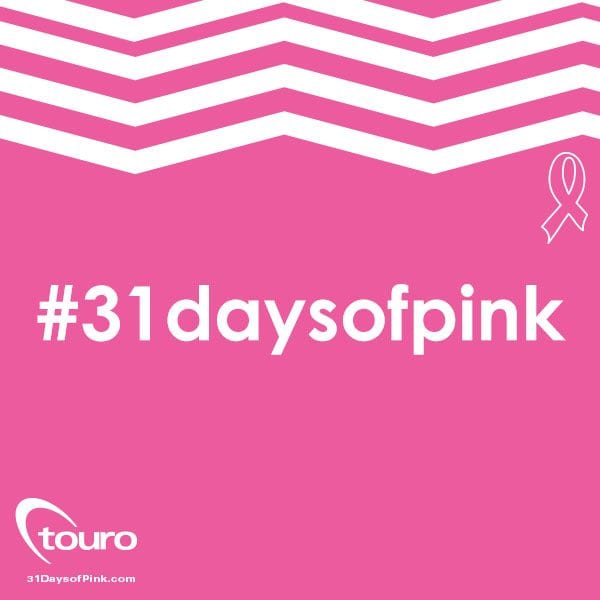Disclosure :: As you all know, October is Breast Cancer Awareness month. This week, we are excited to bring you our Moms Supporting Breast Cancer Awareness series sponsored by Touro Infirmary. We will have personal stories from local breast cancer survivors, as well as information from local medical providers about early screening and detection of breast cancer.
The benefits of screening mammography and when you should begin screening
 As you approach age 40, you may be wondering when you should start screening mammography for breast cancer and what to expect. Before your first mammogram, it’s natural to feel a bit apprehensive when you aren’t quite sure what the screening will be like. Do I have to do anything special beforehand? What do they do? How long will it take? Will it hurt? Is it safe? What if they find something? Many questions may be on your mind, and we hope to provide you with some basics that will put you at ease before you make that first appointment.
As you approach age 40, you may be wondering when you should start screening mammography for breast cancer and what to expect. Before your first mammogram, it’s natural to feel a bit apprehensive when you aren’t quite sure what the screening will be like. Do I have to do anything special beforehand? What do they do? How long will it take? Will it hurt? Is it safe? What if they find something? Many questions may be on your mind, and we hope to provide you with some basics that will put you at ease before you make that first appointment.
First! High-quality mammography is the most effective screening tool available to detect breast cancer before lumps can be felt or symptoms appear. Period! Early detection of breast cancer not only saves lives, but can improve treatment options and potentially minimize the extent of treatment needed.
American Cancer Society (ACS), American College of Radiology (ACR), American College of Surgeons (ACoS), American Society of Breast Surgeons (ASBS), and American College of Obstetricians and Gynecologists (ACOG) recommend yearly mammograms for women 40 and older. If you have a strong family history for breast cancer, starting before age 40 may be appropriate.
What should you do before having a mammogram?
If you experience breast tenderness or pain during your cycle, schedule your mammogram when you know you are generally the least sensitive, usually the week following your menstrual period. When getting dressed on the day of your screening, opt for a two piece outfit instead of a dress. Though you will be given a full length robe to wear, a skirt or pants are generally more comfortable. Don’t use deodorants, powders, lotions or creams on or around your breasts or underarms before your study, as they may contain metals that may interfere with image quality and interpretation.
What should you expect during the exam?
A Radiologic Technologist, specialized in mammography, will bring you into the mammography suite and ask you questions regarding your risk factors for breast problems and any breast symptoms you may be having. If you have moles or scars on your breasts, stickers may be placed on these areas to identify these skin findings as they may appear on the mammogram image. She will then have you face the machine, and the technologist will position each breast, slowly, gently but firmly between the image detector and compression paddle. The compression paddle compresses your breast for just a few seconds, and the technologist takes the mammogram picture. The paddle automatically releases from the breast after the exposure, and you’re on to the next picture. Typically, a screening mammogram consists of a minimum of four exposures with the need for compression allowing for better breast tissue visualization, preventing blurring of detail, and minimizing radiation exposure. After about 15-20 minutes, a technical quality check of images by the technologist, and you’re on your way. But your images go in a different direction. They are transmitted from the mammography unit to a workstation where a Board Certified Diagnostic Radiologist specialized in mammography reviews all the information you have provided, interprets your mammogram in conjunction with a computer aided detection system (CAD), and sends a report to your doctor. And, if you don’t hear from your doctor right away, a results letter will always be mailed to your home from the mammography facility.
Do they hurt?
 Mammograms are no fun, but they’re not bad either. Almost half of all women report no discomfort during the examination, with about half describing mild discomfort on the scale of an uncomfortable pair of shoes or mild headache. Only 1-2% of women describe moderate to severe discomfort. But, breast tenderness before your exam is a good predictor of what you might anticipate during compression. So, if you think you might have problems, you can re-schedule your screening during a less tender time of your menstrual cycle, or if you have no doctor recommended restrictions, consider an OTC analgesic like acetaminophen (Tylenol) or ibuprofen (Advil/Motrin) 1-2 hours ahead of your appointment time. Avoiding caffeine a few days before screening may also help.
Mammograms are no fun, but they’re not bad either. Almost half of all women report no discomfort during the examination, with about half describing mild discomfort on the scale of an uncomfortable pair of shoes or mild headache. Only 1-2% of women describe moderate to severe discomfort. But, breast tenderness before your exam is a good predictor of what you might anticipate during compression. So, if you think you might have problems, you can re-schedule your screening during a less tender time of your menstrual cycle, or if you have no doctor recommended restrictions, consider an OTC analgesic like acetaminophen (Tylenol) or ibuprofen (Advil/Motrin) 1-2 hours ahead of your appointment time. Avoiding caffeine a few days before screening may also help.
What about the radiation from mammography?
While unnecessary radiation is always to be avoided, a mammogram is a low energy/low dose examination which is used during the safest part of a woman’s life. By comparison, the amount of radiation you are exposed to during a screening mammogram is a small fraction of the amount of radiation you receive every year from natural sources (foods, air, soil and atmosphere) here on planet earth as normal background radiation. And with tens of millions of women now having mammograms every year, it accounts for less than 2% of all radiation from medical examinations. The consensus is quite clear; the benefits outweigh the potential risks.
What if they find something?
Approximately 10% of screening mammograms may have findings that need clarification, and you may be asked to return for additional views or for ultrasound. It does not mean you have breast cancer! This is not uncommon with the first mammogram. Difficult mammographic patterns, normal structures present in your breasts, and benign (non-cancerous) findings (some having been there since you were a teenager and never knew) may need to be sorted out. If that happens, you will be notified by your doctor or by the Women’s Imaging Center. We’ll get you in, and we’ll get things figured out.
If you have questions please call the Touro Women’s Imaging Center at (504) 866-8600.
About Dr. Rupley
 Daniel Rupley, M.D. is the Medical Director, Women’s Imaging Services at Touro Infirmary. Dr. Rupley is Board Certified by American Board of Internal Medicine and American Board of Diagnostic Radiology.
Daniel Rupley, M.D. is the Medical Director, Women’s Imaging Services at Touro Infirmary. Dr. Rupley is Board Certified by American Board of Internal Medicine and American Board of Diagnostic Radiology.
















